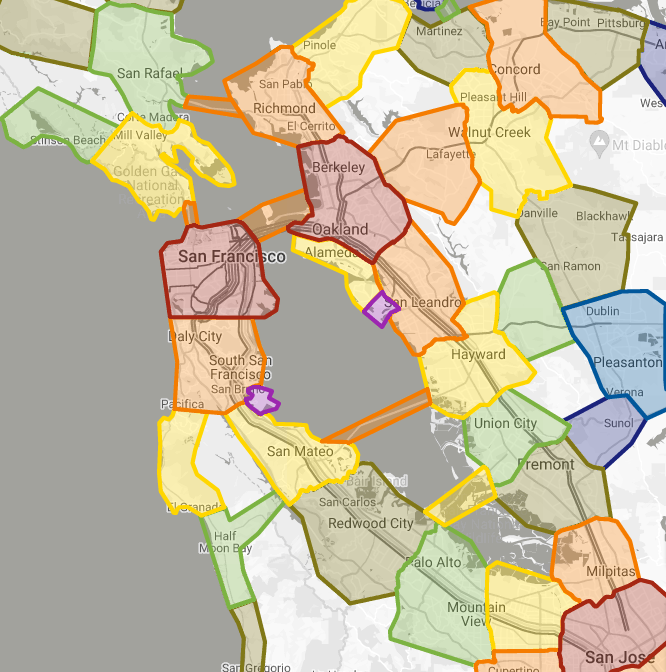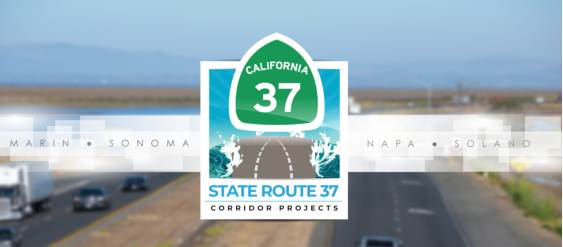After years of advocacy, the threat of legislation, and recommendations from an emergency Blue-Ribbon task force, the Fare Integration Task Force of the Metropolitan Transportation Commission has voted unanimously to adopt a pilot program to create transit passes that will work across all 27 transit agencies in the Bay Area.
The pilot program is planned for a launch in July next year (2022), starting with existing institutional pass programs available through universities, large employers, and housing developments. The plan is to test the program and eventually make it available to all pass holders.
The task force also adopted a plan to provide free transfers between agencies starting in 2023.
The unanimous vote from the members of the task force, who represent ten large Bay Area transit agencies, also adopted a Fare Policy Vision Statement [PDF], recognizing
that the implementation of more coordinated and integrated transit fare policies may offer cost-effective options for improving the transit customer experience, promoting transit ridership recovery from the COVID-19 pandemic, and reducing regional vehicle miles traveled, greenhouse gas emissions, and transit travel times for customers, in ways that are compatible with the equity goals of transit operators, local stakeholders, MTC, and the State of California.
The plan still needs to be approved by each of the agencies before its launch, so advocates will need to continue working to convince each agency it's in their best interests to approve it. It should take about six months for the 27 different agencies to weigh in.
All the transit agency general managers on the Fare Integration Task Force expressed strong support for the pilot programs and appreciation for the work of MTC staff on the work that went into formulating them. That bodes well for approval by the boards of those agencies, at least - although that's not guaranteed.
Past reactions from many of the agencies have ranged from "that's impossible" to "no," but pressure has been building over the last few years to convince them otherwise. Seamless Bay Area has advocated relentlessly for a more rational fare system among the many bus and rail agencies, each with completely different fare structures. They sponsored a bill by Assemblymember David Chiu that would have required fare integration; the bill didn't go anywhere but the prospect of being forced by the state to address the problem is very real. In addition, the MTC's Blue Ribbon Task Force, formed to grapple with plummeting ridership during the pandemic, recognized fare integration as one of the highest priority actions for increasing ridership.
And when the MTC asked for big, transformative ideas for transportation projects to be included in Plan Bay Area, Seamless Bay Area and San Francisco Bay Area Planning and Urban Research Association (SPUR) submitted fare integration and won top honors - and $500.
Bob Powers, BART's General Manager, urged staff to "think bold" on the pilot. Carter Mau, General Manager of the San Mateo County Transit District, remarked that he has witnessed several stabs at integrating Bay Area transit fares in the past. "Never have we been able to get this far and get these results," he said. "We really want to see these pilots be successful."
"It's a huge victory and a major milestone," said Ian Griffiths, Executive Director of Seamless Bay Area. "This vote is a prerequisite for going forward. I would be surprised if any of the agencies whose general managers voted for it resisted; there are still some concerns, but in some ways there is no choice. There is so much attention on this, and expectations are so high; the Blue Ribbon Task Force unanimously agreed this is one of the highest priority actions. The work that's been done on it shows how agencies can work together, so they are a little obligated to deliver."
The plan is the culmination of a Fare Integration Study launched in 2019, and work on its details will continue to iron out exactly how each transit agency's fares will be integrated. More work also needs to be done on the details of the free transfers, but will likely be based on whether the transfers happen between local agencies, regional agencies, or a combination.
The whole point is to make paying for a transit trip in the Bay Area a seamless experience for riders. Although right now riders can use a single Clipper card to pay for fares, the complicated way each agency sets up their fares on Clipper make riding transit, and transferring between agencies, extremely confusing for riders.
Seamless Bay Area sees this as a first step towards rationalizing the governance of Bay Area transit agencies, to make future work to help them coordinate smoother. Their work shows that getting all the regional agencies onto the same fare structure would have an even greater impact on increasing ridership than offering free transfers between agencies.
That's for the future.






